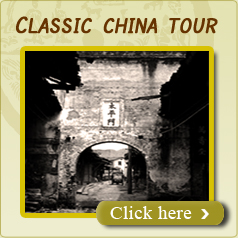Tianjin Tourism

-
City Name:Tianjin (Chinese: 天津, Pinyin:tianjin)
-
Population :Municipality 11,760,000,
-
Location :located at 39°8′N 117°11′E
-
Overview:Tianjin is a large city in northern coastal China. Administratively it is a municipality that has provincial-level status, reporting directly to the central government. Its urban area is the third largest in China, ranked only after Shanghai and Beijing.
Overview
Tianjin is the sixth largest city of the People's Republic of China in terms of urban population. Administratively it is one of the four municipalities that have provincial-level status, reporting directly to the central government. Also, its urban land area is the fifth largest in China, ranked only after Beijing, Shanghai, Guangzhou and Shenzhen.
Tianjin's urban area is located along the Hai He River, which connects to the Yellow and Yangtze Rivers via the Grand Canal in Tianjin. Its ports, some distance away, are located on the Bohai Gulf in the Pacific Ocean. Tianjin was once home to foreign concessions in the late Qing Dynasty and early Kuomintang (KMT) era. The municipality incorporates the coastal region of Tanggu, home to the Binhai New Area and the Tianjin Economic-Technological Development Area (TEDA). Tianjin Municipality borders Hebei province to the north, south, and west; the Chinese capital Beijing is to the northwest, and the Bohai Gulf to the east.
Know More
The formation of Tianjin has undergone a long period of time in the history. The name of Tianjin, first emerged during the early period of Emperor Yongle of China's Ming Dynasty, means a ferry crossing where the Son of Heaven has passed. In the second year of Emperor Yongle of the Ming Dynasty (1404), Tianjin started building fortifications and defenses as a strategic military place. In 1860 Tianjin was turned into an open port. For years its industrial production and port trade volume were only second to Shanghai, becoming the second largest commercial city in China and the biggest financial and trading center in north China. After the founding of the People's Republic of China Tianjin was turned into a municipality directly under the central authorities.
Tianjing Antique market (guwan shichang) is one of the China’s most impressive markets. Just the sheer size and variety makes it fascinating to stroll around, especially on Sunday mornings. The Ancient Culture street (gu wenhua jie) of Tianjing is an attempt to recreate the appearance of an ancient Chinese city. On certain public holidays streets operas are staged here. It is claimed that the Temple of Tianhou (tian hou gong) located here was built in 1326. Among the other temples the most famous located in Tianjing are Confucius Temple (wen miao), Great Mosque (qingzhen si), Dabeiyuan Monastery (dabeiyuan), and the Catholic Church (xikai jiaotong).
People from urban Tianjin speak Tianjin dialect, which comes under the Mandarin subdivision of spoken Chinese. Despite its proximity to Beijing, Tianjin dialect sounds quite different from Beijing dialect, which provides the basis for Putonghua, official spoken language of the People's Republic of China.
Tianjin also has several famous snack items. Goubuli (狗不理包子) is a traditional brand of baozi (包子) (steamed buns with filling) that is famous throughout China. Guifaxiang (桂发祥麻花) is a traditional brand of mahua (麻花) (twisted dough sticks). Erduoyan (耳朵眼炸糕) is a traditional brand of fried rice cakes.
People from Tianjin are stereotyped to be talkative, eloquent, humorous, open, and unfettered.[citation needed] There is a term for the stereotype of the always-eloquent and sometimes-humorous Tianjin native: wèizuǐzi (卫嘴子), which translates roughly as "the Tianjin mouth". Tianjin is famous for its native talking art - Xiangsheng, sometimes translated as crosstalk, is a traditional Chinese comedy duo performance in the form of a dialogue, rich in puns and allusions, is used in a rapid, bantering style. Xiangsheng is one of China's foremost performing arts. Canadian xiangsheng comedian Dashan (Mark Rowswell) says the closest equivalent in English would be Abbott and Costello's "Who's on First?" sketch.
Must see

Huangyaguan Great Wall is situated in Jixian Country, 120 km away from Tianjin.and stands just in the middle of the Beijing, Tianjin, Tangshan and Chengde.....more

Tanglin is a rare treasure land. North is the Changrui Hill, South is Jinxing Mountain, Yingbi mountain is in the middle. The west and east are both beautiful mountains....more

Temple of Solitary Joy is located at inside west city gate of Ji County, Tianjin City. It is an ancient Buddhist temple enjoying high reputation home and abroad. It was initially built in Tang Dynasty and rebuilt in the 2nd year of Tonghe Regime, Liao Dynasty (984). ....more
The courtyard is located in the Town ofYang Liu QingnearTianjincity.
The Shi family was one of the eight most famous and powerful families inTianjinin the late Qing Dynasty.







